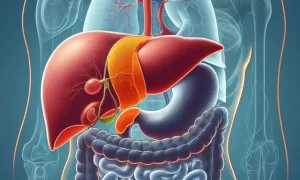Immune Evasion and Pulmonary Viral Load in Omicron Mixed Subtype XE
- Normal Liver Cells Found to Promote Cancer Metastasis to the Liver
- Nearly 80% Complete Remission: Breakthrough in ADC Anti-Tumor Treatment
- Vaccination Against Common Diseases May Prevent Dementia!
- New Alzheimer’s Disease (AD) Diagnosis and Staging Criteria
- Breakthrough in Alzheimer’s Disease: New Nasal Spray Halts Cognitive Decline by Targeting Toxic Protein
- Can the Tap Water at the Paris Olympics be Drunk Directly?
Immune Evasion and Pulmonary Viral Load in Omicron Mixed Subtype XE
- Should China be held legally responsible for the US’s $18 trillion COVID losses?
- CT Radiation Exposure Linked to Blood Cancer in Children and Adolescents
- FDA has mandated a top-level black box warning for all marketed CAR-T therapies
- Can people with high blood pressure eat peanuts?
- What is the difference between dopamine and dobutamine?
- How long can the patient live after heart stent surgery?
Nature Preprint: Immune Evasion and Pulmonary Viral Load in Omicron Mixed Subtype XE
On April 4, 2022, the Nature preprint database published research from the Pasteur Institute in France, reporting XD, the virological characteristics of Delta-Omicron recombinant subtypes [1].
Research shows:
- This strain of immune escape is characterized by Omicron BA.1, which binds ACE2 more like Delta in hACE2 mice .
- Viral loads in the lung and nose were lower than Delta and close to Omicron.
Cov-lineages.org shows that in fact all subtypes starting with X indicate “recombinant” virus serotypes .

Except for XA, XB, XC, all subtypes from XD all the way up to XS are recombinant serotypes of Omicron . That is to say, since the appearance of Alpha mutants, most of the recombinant types are formed between Omicron and other serotypes or subtypes within Omicron.
This suggests that superinfection of Omicron is much more common than other mutant strains.
In epidemiology, if a patient is infected with a pathogen, the infection is cured, and then a de novo infection with the pathogen occurs is called a superinfection .
If the infection is still in progress, the same pathogen re-invades and causes infection, which is called superinfection . Superinfection is the mechanism by which many viruses recombine to form new virus subtypes.
Omicron is easy to form superinfection, which is due to its special RBD and Spike structure , so that the neutralizing antibodies after infection by other popular strains cannot effectively neutralize Omicron, so superinfection is more likely to occur.
However, the Spike of SARS-CoV-2 is the main protein that determines its ability to spread and infect cells. Therefore, it can be predicted that the recombinant type carrying BA.2 Spike has an absolute transmission advantage .
But it is difficult to predict whether these recombinant subtypes will overtake the original single subtype and form new epidemics. This requires virological experiments to judge.
References:
1. https://www.researchsquare.com/article/rs-1502293/v1
Immune Evasion and Pulmonary Viral Load in Omicron Mixed Subtype XE
(source:internet, reference only)
Disclaimer of medicaltrend.org
Important Note: The information provided is for informational purposes only and should not be considered as medical advice.



